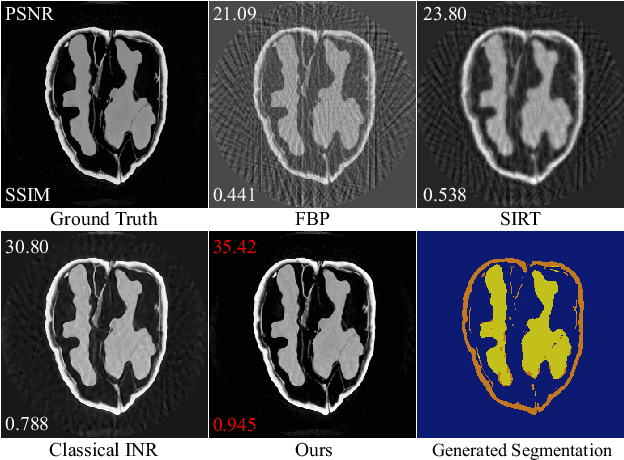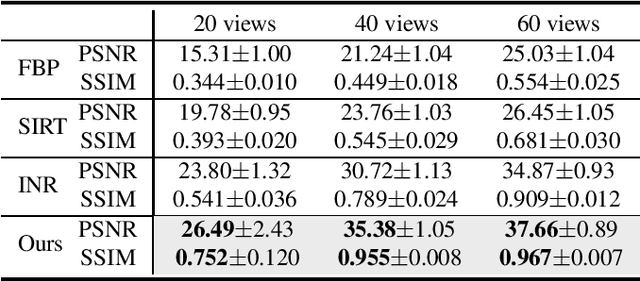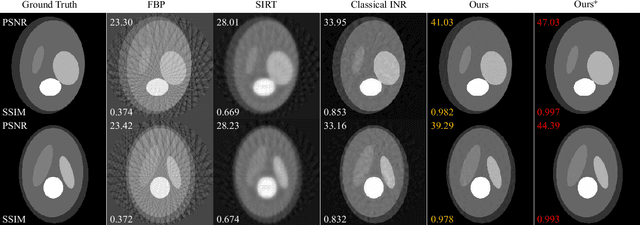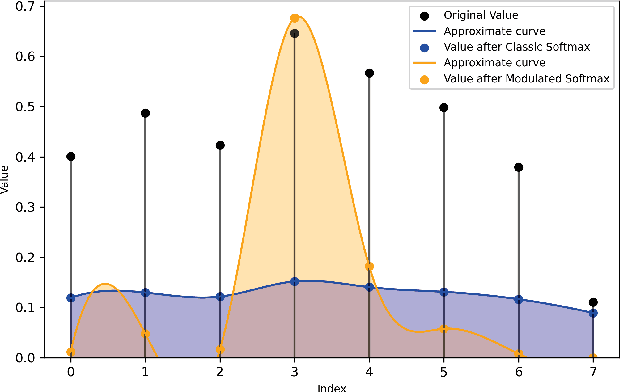Wangduo Xie
AC-IND: Sparse CT reconstruction based on attenuation coefficient estimation and implicit neural distribution
Sep 11, 2024



Abstract:Computed tomography (CT) reconstruction plays a crucial role in industrial nondestructive testing and medical diagnosis. Sparse view CT reconstruction aims to reconstruct high-quality CT images while only using a small number of projections, which helps to improve the detection speed of industrial assembly lines and is also meaningful for reducing radiation in medical scenarios. Sparse CT reconstruction methods based on implicit neural representations (INRs) have recently shown promising performance, but still produce artifacts because of the difficulty of obtaining useful prior information. In this work, we incorporate a powerful prior: the total number of material categories of objects. To utilize the prior, we design AC-IND, a self-supervised method based on Attenuation Coefficient Estimation and Implicit Neural Distribution. Specifically, our method first transforms the traditional INR from scalar mapping to probability distribution mapping. Then we design a compact attenuation coefficient estimator initialized with values from a rough reconstruction and fast segmentation. Finally, our algorithm finishes the CT reconstruction by jointly optimizing the estimator and the generated distribution. Through experiments, we find that our method not only outperforms the comparative methods in sparse CT reconstruction but also can automatically generate semantic segmentation maps.
Dense Transformer based Enhanced Coding Network for Unsupervised Metal Artifact Reduction
Jul 28, 2023



Abstract:CT images corrupted by metal artifacts have serious negative effects on clinical diagnosis. Considering the difficulty of collecting paired data with ground truth in clinical settings, unsupervised methods for metal artifact reduction are of high interest. However, it is difficult for previous unsupervised methods to retain structural information from CT images while handling the non-local characteristics of metal artifacts. To address these challenges, we proposed a novel Dense Transformer based Enhanced Coding Network (DTEC-Net) for unsupervised metal artifact reduction. Specifically, we introduce a Hierarchical Disentangling Encoder, supported by the high-order dense process, and transformer to obtain densely encoded sequences with long-range correspondence. Then, we present a second-order disentanglement method to improve the dense sequence's decoding process. Extensive experiments and model discussions illustrate DTEC-Net's effectiveness, which outperforms the previous state-of-the-art methods on a benchmark dataset, and greatly reduces metal artifacts while restoring richer texture details.
 Add to Chrome
Add to Chrome Add to Firefox
Add to Firefox Add to Edge
Add to Edge